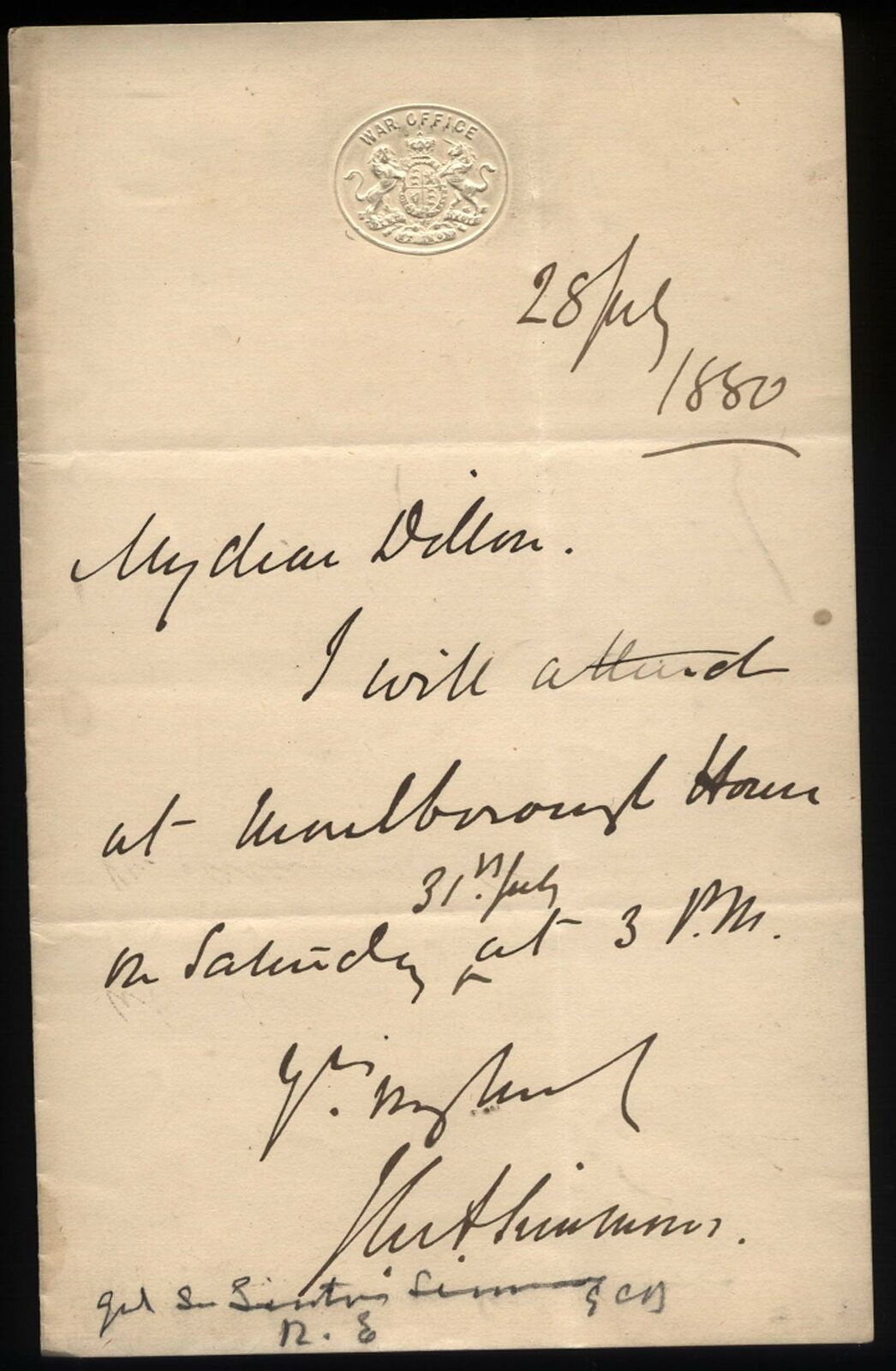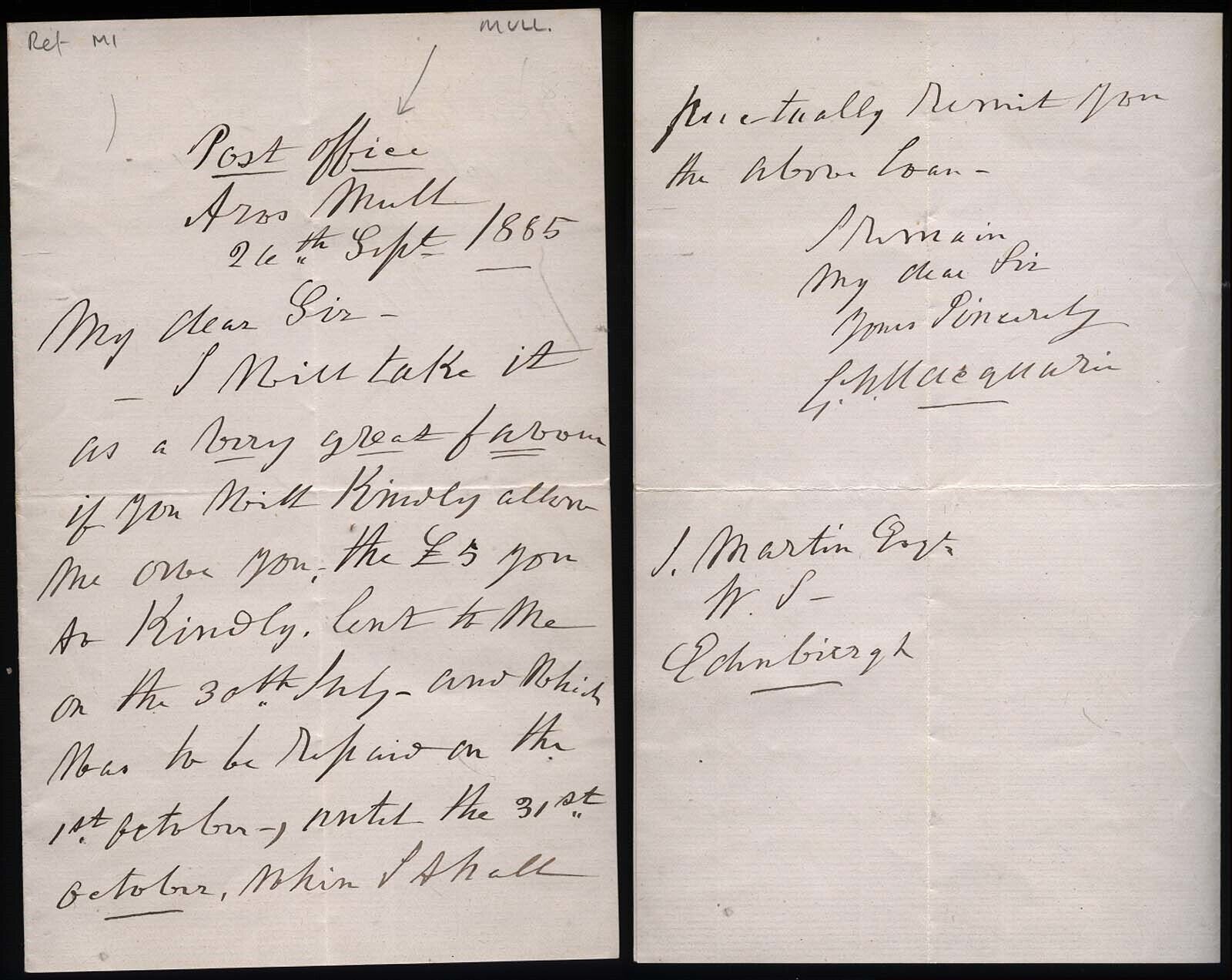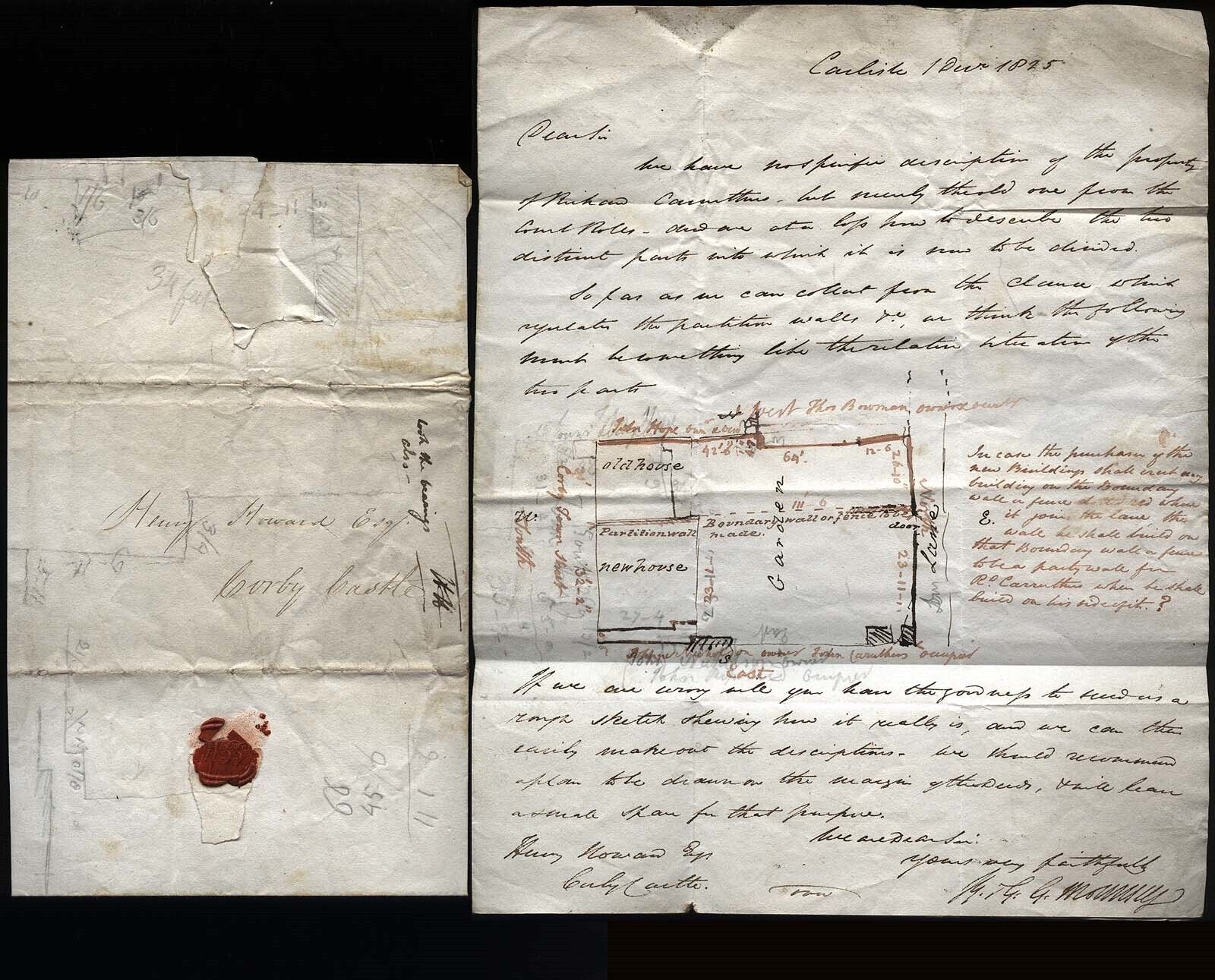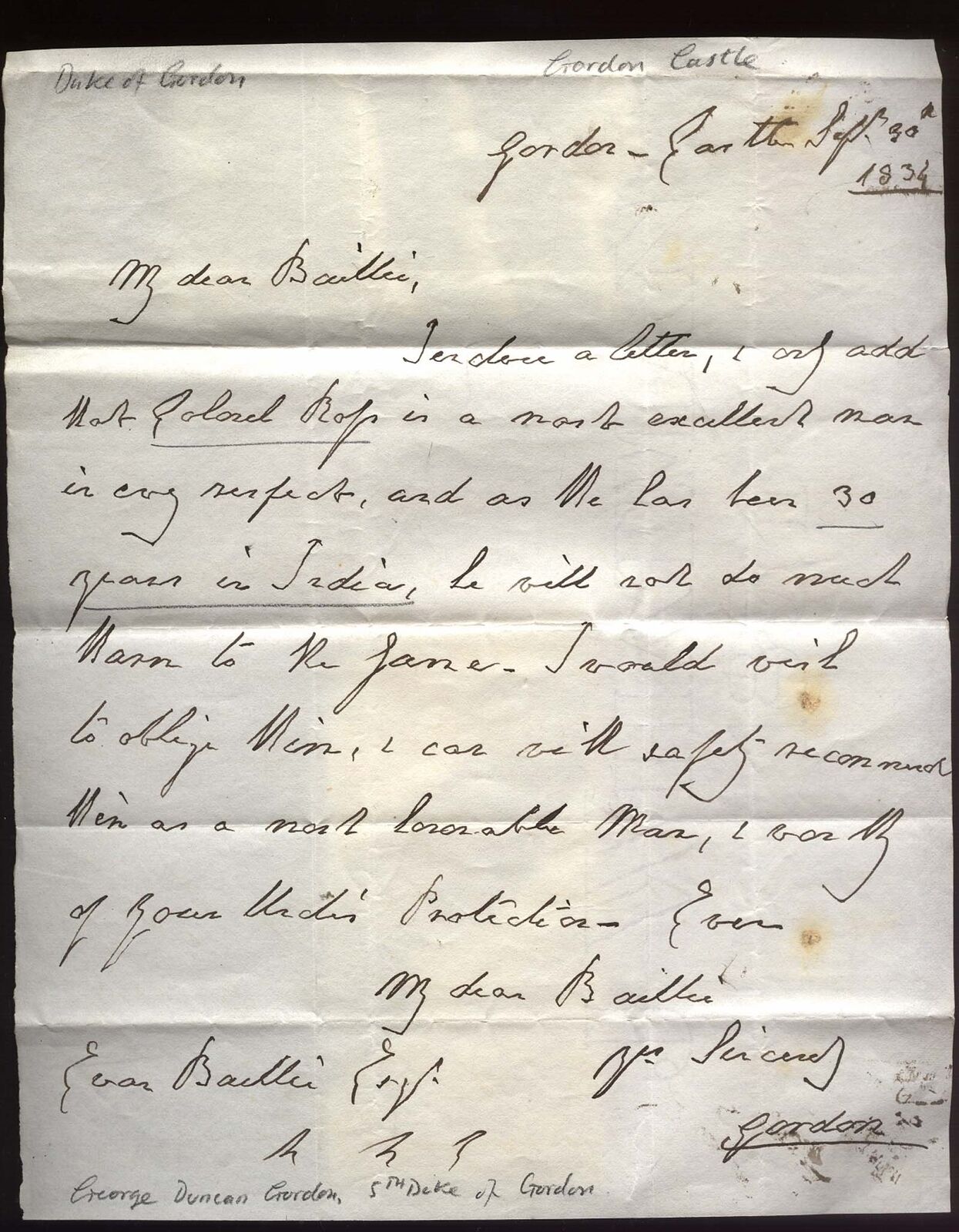-40%
1854 Major-General Sir William Eyre -Lady Bathurst, Her Son Arthur E V Ponsonby
$ 223.94
- Description
- Size Guide
Description
1854 Major-General Sir William Eyre -Lady Bathurst, Her Son Arthur E V PonsonbyThis product data sheet is originally written in English.
1854 Major-General Sir William Eyre, United Service Club to Lady Emily Bathurst, regarding Her Son Arthur E V Ponsonby and offering to help his military career , suggestions of ADC etc.
EYRE, Sir WILLIAM (1805–1859), major-general, younger son of Vice-admiral Sir George Eyre, K.C.B., K.C.M.G., by Georgina, daughter of Sir George Cooke, bart., was born on 21 Oct. 1805. He was educated at Rugby School, where he remained from 1817 until he entered the army as an ensign in the 6th regiment on 17 April 1823. He was promoted lieutenant in that regiment on 5 Nov. 1825, and to a half-pay captaincy on 20 Nov. 1827. He remained unemployed until 21 May 1829, when he received a company in the 73rd regiment, with which he continued for nearly twenty-five years. The 73rd was stationed in the Mediterranean from 1829 to 1839, in which year Eyre was promoted major, in Canada from 1839 to 1841, and at home from 1841 to 1845, when it was ordered to the Cape of Good Hope. On its way out, however, the regiment, then under the command of Lieutenant-colonel Van der Meulen, was directed by the British minister at Rio de Janeiro to proceed to Monte Video, which city it garrisoned from January to July 1846, and defended against an Argentine force under General Oribe. In the latter month it proceeded to its original destination, and was actively employed in the Kaffir war of 1847, under the command of Eyre, who was promoted lieutenant-colonel on 12 Nov. 1847. Eyre's fitness for service in a war against savages in a difficult country was universally recognised by the generals under whom he served, Sir Peregrine Maitland, Henry Somerset, and Sir George Berkeley. When the next Kaffir war broke out in 1851, he was at once ordered to the front, and placed in command of a column, consisting of his own regiment and some light infantry, by Sir Harry Smith. With this force he accomplished many important feats of arms; on 16 April 1851 he defeated the Kaffirs at Quibigui River, and on 10 Sept. at Committee's Hill; on 14 March 1852 he commanded the right column in the attack on Macomo's stronghold; and on 7 April he captured over eight hundred cattle in an independent expedition into the Amatola country. When Sir George Cathcart succeeded Sir Harry Smith, he maintained Eyre in command of his independent column, and under the new commander-in-chief Eyre co-operated throughout the final operations of the Kaffir war with the greatest credit (see Correspondence of Sir George Cathcart, pp. 16, 36, 67, 94, 127, 153). When this was over, Eyre was selected for the command of the second brigade of the army, which Sir George Cathcart led in person to punish Moshesh, the Basuto chief. At the battle of Berea he commanded on the right, and did much to win the victory. Nevertheless, in certain private letters, afterwards published (ib. pp. 344, 345), Cathcart blamed Eyre for thinking more of seizing cattle than of his military duties, an accusation which the latter refuted in an interesting letter to the ‘Morning Herald’ of 23 Oct. 1856. In his public despatches Cathcart had nothing but praise for his subordinate, and Eyre was for his services made C.B., and an aide-de-camp to Queen Victoria, and promoted colonel on 28 May 1853. He shortly afterwards returned to England, and when an army was ordered to the East under Lord Raglan in 1854, Eyre was nominated to command the second brigade of the 3rd division under his old chief Cathcart. At the head of this brigade he was present at the battle of the Alma, and he was honourably mentioned for his services in command of the trenches during the battle of Inkerman. After that battle he succeeded to the command of the 3rd division, although he was not promoted major-general until 12 Dec. 1854, in succession to Cathcart. He remained in the Crimea throughout the terrible winter of 1854–5, and it was partly in recognition of this conduct that Lord Raglan gave him the command of the force which was directed to threaten the dockyard creek on 18 June 1855. The history of this movement and its results are fully related in Kinglake's ‘Invasion of the Crimea’ (vol. viii.). Eyre was himself wounded in the face during the operations. He remained in the Crimea until the conclusion of the war, and was for his services made a K.C.B. on 10 July 1855, and a knight of the Legion of Honour and of the Medjidie in the following year. In July 1856 he was appointed to the command of the forces in Canada, but the privations of the Crimean winter had destroyed his health, and he had to resign in June 1859. He retired to Bilton Hall, near Rugby, where he died on 8 Sept. 1859. A window was erected to his memory in Bilton Church
Arthur Edward Valette Ponsonby
Also Known As: "Lt. Colonel 2/12th"
Birthdate: December 04, 1827
Birthplace: Malta
Death: June 16, 1868 (40)
Jabalpur, Madhya Pradesh, India
Place of Burial: Jabalpur, Jabalpur, Madhya Pradesh, India
Immediate Family:
Son of Major General Sir Frederick Cavendish Ponsonby, GCMG, KCB, KCH and Lady Emily Charlotte Bathurst
Brother of Gen. Rt Hon Sir Henry Frederick Ponsonby; Georgina Melita Maria Ponsonby; Harriet Julia Frances Ponsonby; Selina Barbara Wilhelmina Baring and Frederick John Ponsonby
LIEUT-COLONEL ARTHUR EDWARD VALETTE PONSONBY, WHO AFTER HAVING SERVED IN THE KAFFIR WAR OF 1851 WITH THE 43RD LIGHT INFANTRY, WAS TRANSFERRED TO THE GRENADIER GUARDS IN 1854. HE WAS AIDE-DE-CAMP TO SIR G. BROWNE, AND SIR W. CODRINGTON DURING THE SIEGE OF SEVASTOPOL. HE EXCHANGED IN TO THE 12TH REGIMENT, AND WHEN IN COMMAND OF THE 2ND BATTALION OF THAT CORPS DIED AT JUBBULPORE, 16TH JUNE, 1868.
:
Powered by SixBit's eCommerce Solution
1854 Major-General Sir William Eyre, United Service Club to Lady Emily Bathurst, regarding Her Son Arthur E V Ponsonby and offering to help his military career , suggestions of ADC etc.EYRE, Sir WILLIAM (1805–1859), major-general, younger son of Vice-admiral Sir George Eyre, K.C.B., K.C.M.G., by Georgina, daughter of Sir George Cooke, bart., was born on 21 Oct. 1805. He was educated at Rugby School, where he remained from 1817 until he entered the army as an ensign in the 6th regiment on 17 April 1823. He was promoted lieutenant in that regiment on 5 Nov. 1825, and to a half-pay captaincy on 20 Nov. 1827. He remained unemployed until 21 May 1829, when he received a company in the 73rd regiment, with which he continued for nearly twenty-five years. The 73rd was stationed in the Mediterranea
Document Type
Original Manuscript Letter
Country/ Organization
Great Britain
Club Name
United Service Club
Related Interests
Arthur E.V.Ponsonby
Service
Army
EAN
Does Not apply
Country
England
Letter From
Major-General Sir William Eyre
Family Surname
Eyre
City/Town/Village/Place
London
Year of Issue
1854
Era
1851-1860
Addressed to
Lady Emily Bathurst
Issued/ Not-Issued
Issued
Type
Original letter
Time Period
19th Century (1800-1899)
Conflict
during CRIMEA WAR









